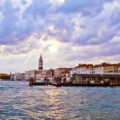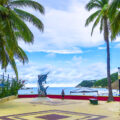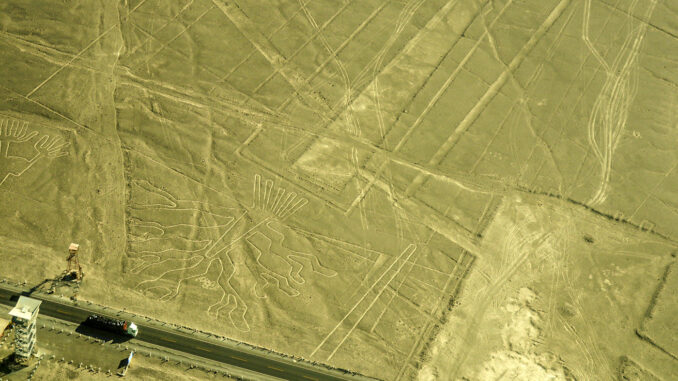
The desert in Peru that’s etched with geometric lines and sketches of plants, animals and birds has always been a head scratcher. Who filled the Nazca plain that hardly ever gets rain with giant doodles in the sand?
Why did they make huge figures that can only be appreciated from the air at a time when no one could fly high enough to see them? Were they ritual sites where the tribes that became the Incas made offerings for rain? Even more intriguingly, did their makers receive guidance from above?
A lot of folks have tried to unravel the mysteries of the fanciful sketches in the sand that include what appear to be a hummingbird, a condor, a spider, a daisy and… what some say could be an astronaut in the desert sand. On a flightseeing expedition from Seabourn Cruises’ new Seabourn Venture over one of the driest places in the world, it’s time to try to make a few of our own guesses.
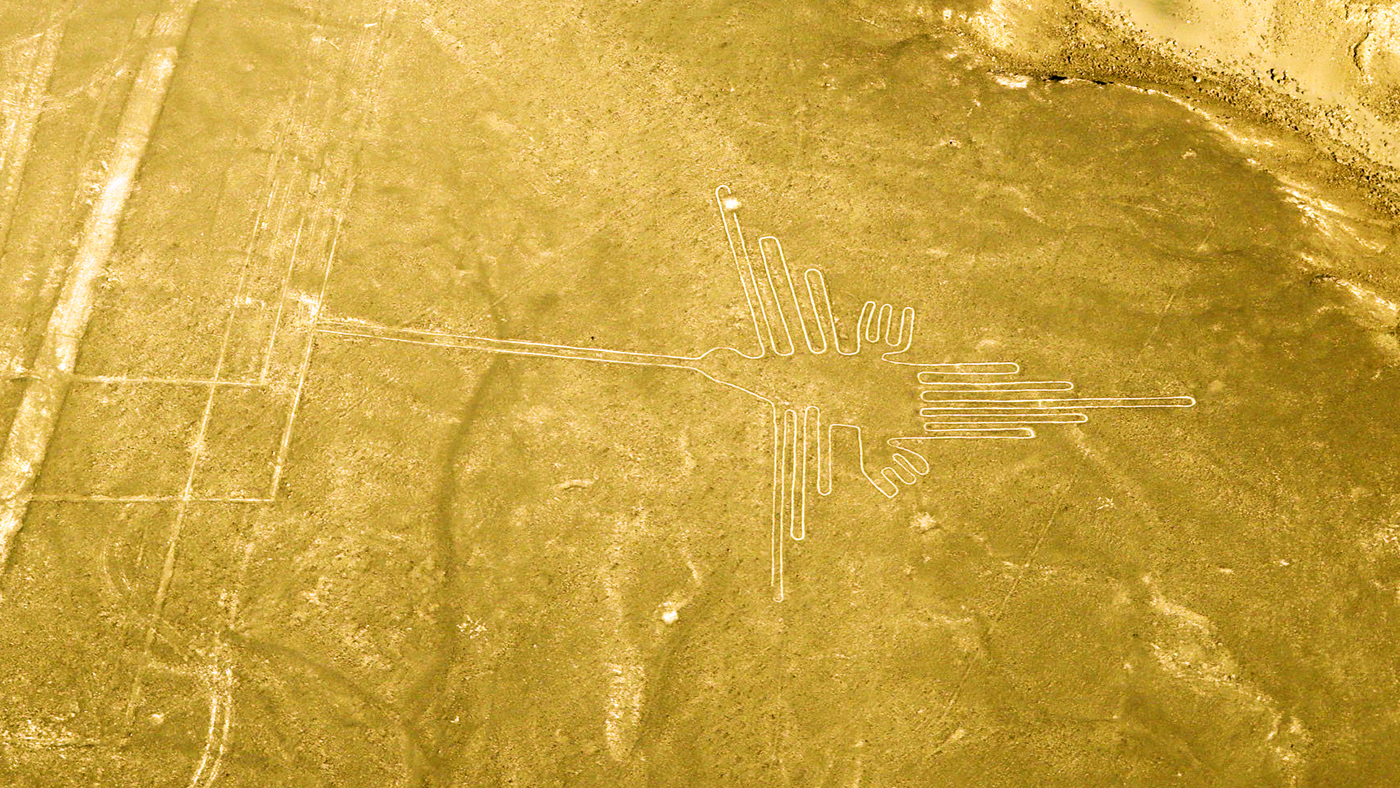
After a drive from the port of General San Martin, we’re taking off from a sparkling new airport in Pisco, the namesake of the fiery Peruvian liquor, for a half-hour flight to the best-preserved lines and figures around the town of Nazca.
And from the moment we take off, the desert terrain everywhere is fascinating. Huge sand dunes billow in dramatically artistic waves, but there are also wide, flat stretches where farms create checkerboards of greens and yellows. A lot more people live and work here than you might expect.
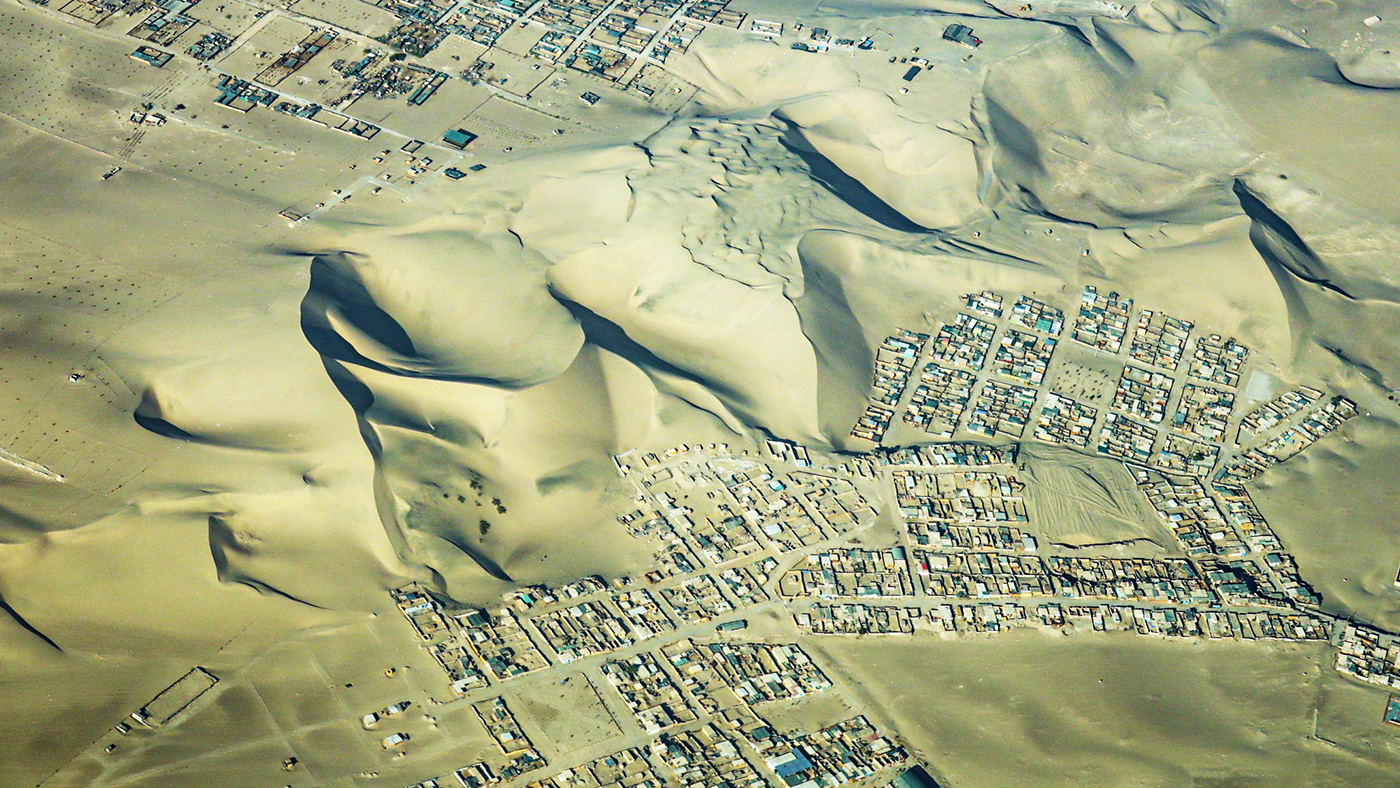
We get some background from the crew of our 10-passenger Cessna Caravan. Modern scientists have concluded the scratches in the desert known as geoglyphs were made between 500 BC and 500 AD. The people who created the sand figures would later become part of the Incan Empire. Unfortunately, they didn’t leave any guidebooks behind to the meaning of the more than 100 enigmatic shapes, spirals, arrows and wavy lines they created on the desert floor.
The enigmatic symbols gained international notoriety in the 1960s when authors including Chariots of the Gods author Erich von Daniken popularized the notion that these were signs visible from space to attract visitors from outer space. If so, might they have been in search of precious minerals or just a good Pisco sour? That part’s never been answered.

Of course, there are no shortage of alternative theories about their meaning. The fallback is this was a place of pilgrimage for religious festivals or just to make offerings for rain and good harvests. There are heaps of broken pottery around the figures which suggests there was some kind of long-term reason to stay awhile. So could it be the ceremonies included smashing a tea pot or dish as an offering to whatever god they thought would bring them rain?
Spanish invaders in the sixteenth century mentioned the lines and swirls as some kind of trail markers. But it wasn’t until the 1930s when people started flying over the desert that the size and intricate patterns opened questions of their supposed ability to be seen from the cosmos.
The real fun begins as our plane reaches the best known grouping of Nazca figures and we descend from a height of about 5000 feet to about 2000 feet and begins to make a series of circular turns to give people on both sides of the plane the same view. We had been warned the swerving could cause queasiness in some people and Dramamine was offered pre-flight just in case. But the very skilled lady pilot flew in such gentle arcs there was no appreciable oops factor.
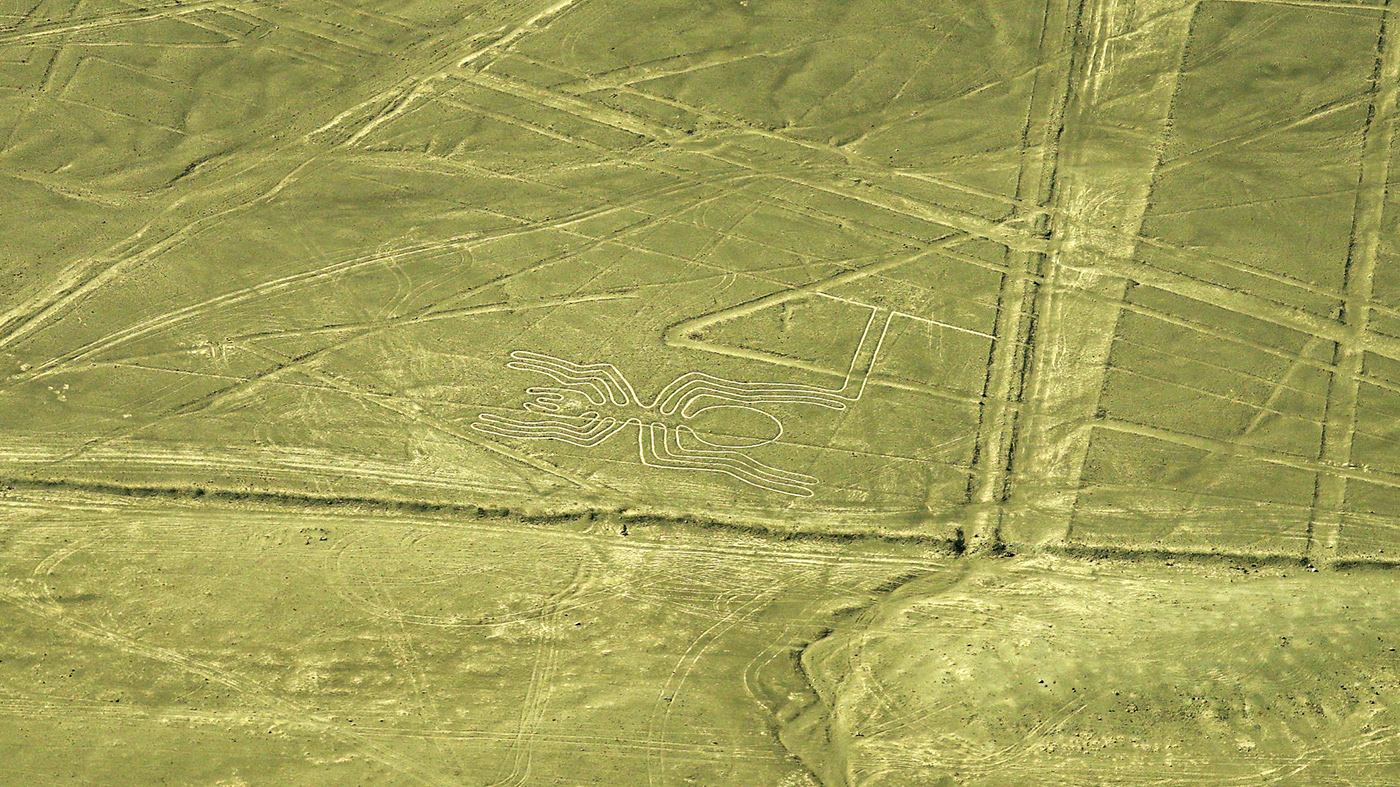
There are about 70 enigmatic sketches of animals and plants that are clearly visible. Many of them much smaller than you might expect if they were primarily signposts to visitors from space. Some do measure over 1,000 feet long and really do stand out. Best known is the hummingbird, whose long beak might indeed be a pointer to a long-gone tourist attraction. The monkey is certainly cute with its maze-like curved tail and there are a whale, a duck, lizards and a what is clearly a spider. There’s also no question about the daisy, a cactus plant, a llama and a duck.
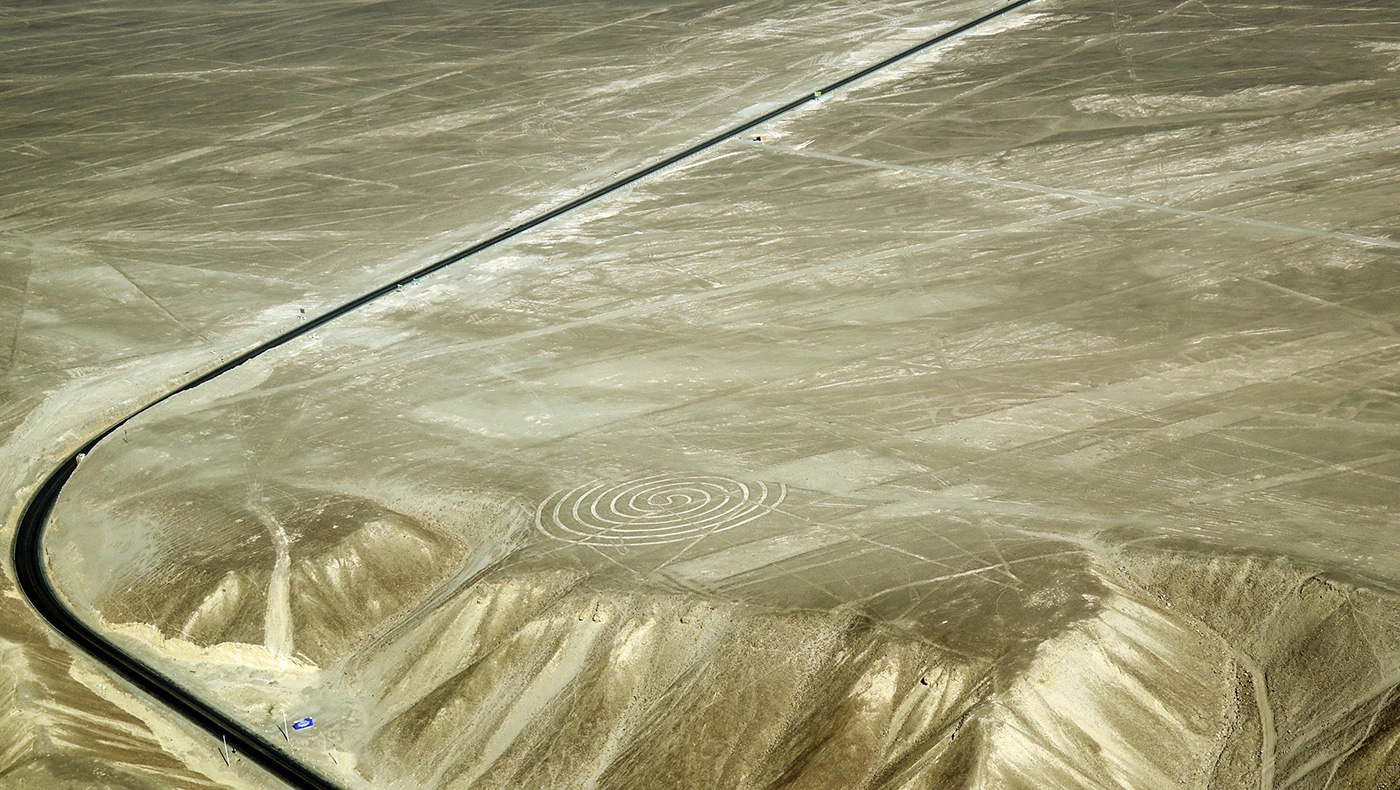
That vaunted astronaut is open to interpretation, though. He could also just be somebody wearing a party hat.
The shapes themselves wouldn’t have required alien intervention, though. Researchers have been able to come up with similar etchings by just scraping off the upper few inches of the plain to reveal lighter-colored sand and rock below. The glyphs have lasted for so long due to the unique climate conditions in the area, which has among the lowest rainfall rate in the world and very little wind.
Making sand art was obviously a popular pastime. New discoveries with high-resolution photos and radar have found more than 100 additional figures hidden in the sand on the plain, some quite small and hardly visible from space.
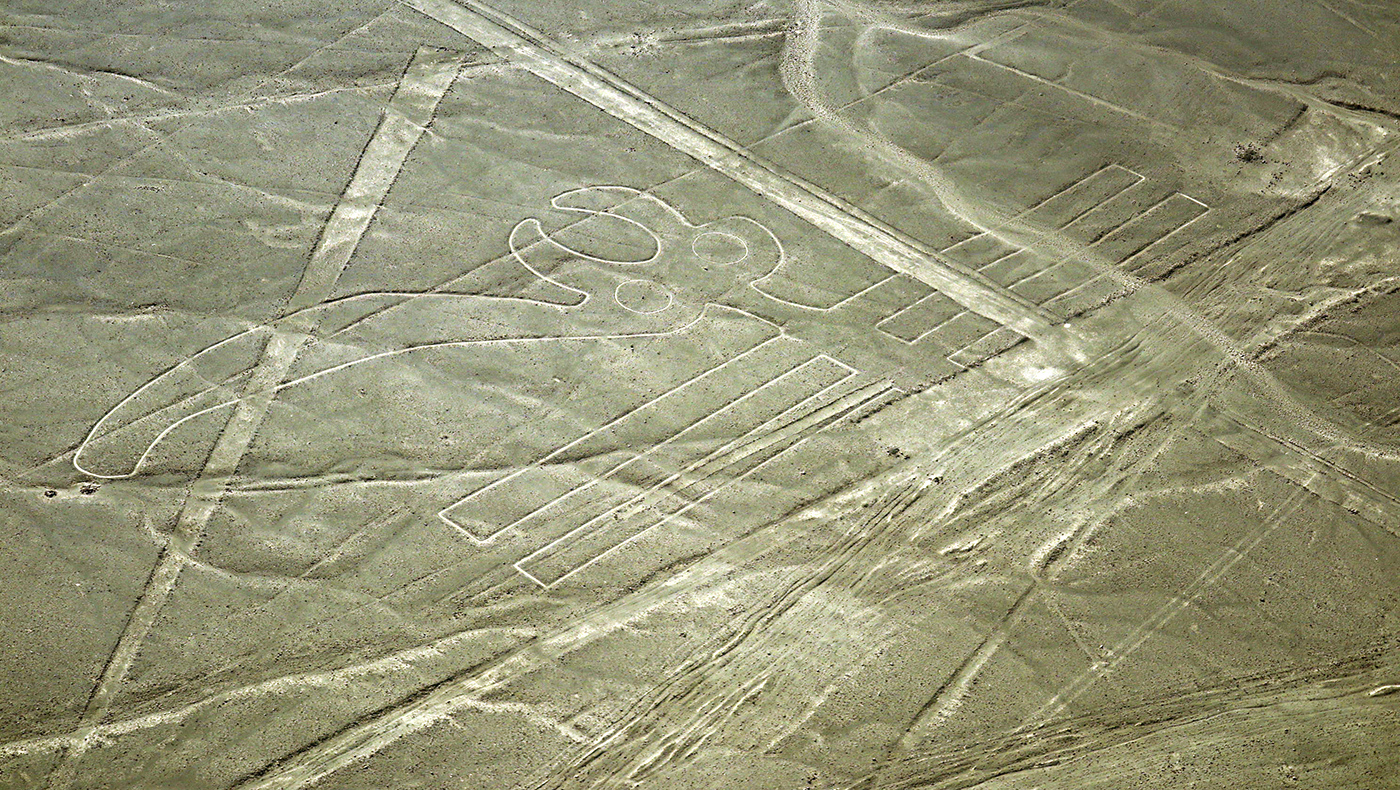
In fact, there are a lot of modern lines in the sand still being created. The desert plain is an area of 400 square miles that seems to have straight lines radiating across it in all directions, some of which are 30 miles long. There are dirt roads and trails and piles of rock that are the former boundaries of farm fields that could also be interpreted as landing sites for approaching aircraft. A modern addition across the dune-scape is the Pan American Highway that snakes around and almost intersects some of the most prominent figures.
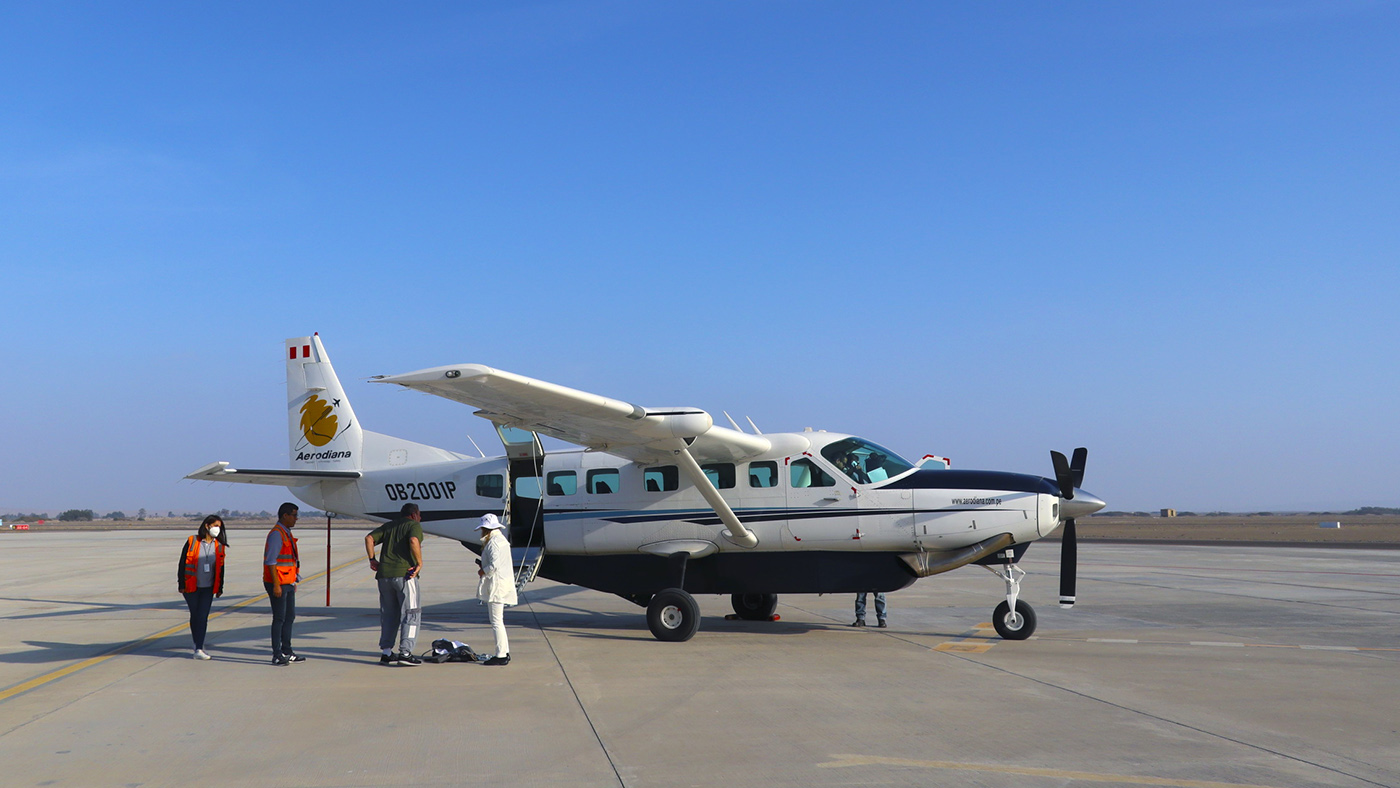
We’re flying back to Pisco with more questions than answers to discuss over cocktails on Seabourn Venture. Still it’s fun to imagine that these were all designed as maps and signs for people who arrived from above. There are even set of scrapings that have a striking resemblance to the runways and taxiways of a modern airport that they could have landed on.
Flightseeing is an optional shore excursion from Seabourn Cruises’ new expedition ship Seabourn Venture. It’s expensive at $699 a person, but a fascinating experience. The alternative would be a two- hour drive to a small observation tower that offers views of only two of the figures. Nazca air tours typically fly over 16 of the most famous glyphs and flights depart from the brand new Pisco airport.
Seabourn Venture is sailing a similar itinerary in Peru in Oct. 2023 before a winter season in Antarctica. A sister ship, Seabourn Pursuit is also due to begin service in Oct. 2023 doing a route along the eastern coast of South America en route to a winter Antarctica season.
Story by Wallace Immen, The Cruisington Times.




